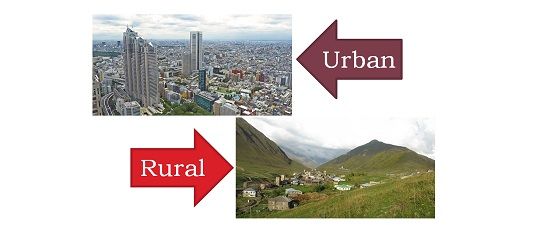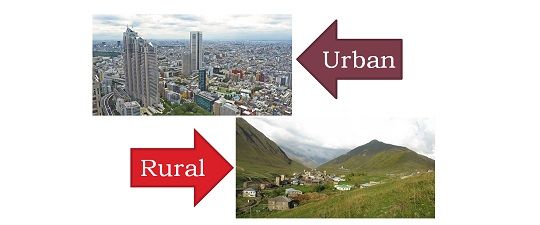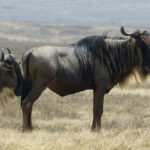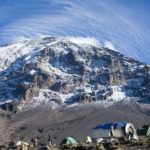In Tanzania, stark contrasts exist between urban and rural life. Picture Dar es Salaam, a bustling metropolis with a population exceeding 6 million, offering access to modern amenities and services. On the other hand, rural areas like Dodoma, while rich in cultural heritage, face limited infrastructure and slower-paced lifestyles.
The history of these differences dates back to colonial times when urban centers received more investment. Consequently, over 70% of Tanzania’s population still lives in rural regions without access to basic healthcare or continuous electricity. Bridging this gap requires significant attention to equitable development to support sustainable growth.

Urban vs. Rural Life in Tanzania: Key Differences
Urban life in Tanzania features modern infrastructure and accessible services. Cities like Dar es Salaam boast advanced hospitals, schools, and shopping centers. Public transportation in urban areas is more developed, easing daily commutes. In contrast, rural areas often lack paved roads and consistent access to essential services. This significant gap in infrastructure affects the quality of life for rural residents.
Living in rural Tanzania emphasizes community and tradition. Here, close-knit communities thrive on shared responsibilities and cultural heritage. Festivals and communal farming activities are integral to social life. However, this strong community bond can sometimes limit exposure to broader economic opportunities. Meanwhile, urban areas offer diverse cultural experiences but may lack this deep sense of community.
The economic opportunities present another stark contrast between urban and rural regions. Cities provide diverse employment options in various industries, including technology, finance, and hospitality. On the other hand, rural economies largely depend on agriculture and small-scale commerce. This dependency makes rural areas more vulnerable to unpredictable weather patterns and market fluctuations. Urban areas tend to recover faster from economic shocks due to their diverse economies.
Urban areas tend to attract more investment and development projects. Government and international aid often prioritize urban centers, enhancing their growth. This development leads to better educational facilities and health services. In rural settings, limited investment results in fewer schools and under-equipped health facilities. Bridging the urban-rural divide remains a significant challenge for Tanzania’s sustained growth.
Infrastructure and Access to Services
In urban areas like Dar es Salaam, infrastructure development is quite advanced. Residents benefit from well-maintained roads, frequent public transportation, and reliable electricity. Clean water supply is typically consistent, ensuring that households have access to this vital resource. However, in rural areas, infrastructure often lags behind. Many villages lack paved roads, making transportation difficult, especially during the rainy season.
The healthcare system in urban centers is also more developed. Cities are home to major hospitals and specialized medical facilities. Urban residents typically have greater access to healthcare services, including emergency care. In contrast, rural areas usually depend on small clinics. These clinics often face shortages in medical supplies and experienced healthcare professionals.
Education in urban areas is bolstered by better facilities and more qualified teachers. Schools in cities tend to have modern classrooms, libraries, and laboratories. This environment supports a higher standard of education. On the other hand, many rural schools struggle with limited resources, such as outdated textbooks and inadequate facilities. As a result, students in rural areas often face challenges in receiving quality education.
Reliable internet access is another area where urban and rural areas differ significantly. In cities, people enjoy high-speed internet services from multiple providers. This connectivity supports business, education, and personal communication. However, in rural areas, internet access is often slow or non-existent. This lack of connectivity can severely limit opportunities for residents in education and commerce.
Lifestyle and Cultural Contrast
Urban lifestyles in Tanzania are fast-paced and influenced by modern trends. People in cities like Arusha often have structured routines, balancing work, social activities, and personal time. The availability of entertainment options such as cinemas, malls, and restaurants adds an extra layer of convenience and excitement. Meanwhile, rural life revolves around agricultural activities and community gatherings. These slower-paced environments emphasize tradition and family bonds.
In rural areas, traditional customs and cultural practices are deeply ingrained. Village ceremonies, such as weddings and harvest festivals, are grand celebrations involving the entire community. Elders play a key role in preserving and passing on cultural heritage. Urban areas, however, are melting pots of different cultures. Here, westernized customs blend with local traditions, creating a unique cultural mix.
The culinary scenes vary significantly between urban and rural areas. In cities, residents enjoy a diverse range of cuisines from around the world. Restaurants and street food vendors offer everything from traditional Tanzanian meals to international dishes. Rural diets, on the other hand, often rely on locally sourced ingredients and traditional cooking methods. Meals in the countryside highlight fresh produce and age-old recipes.
Another key difference lies in social interactions. Urban dwellers tend to lead more private lives, with social interactions often limited to work and specific social circles. Privacy is highly valued in these settings. Conversely, rural communities are built on strong interpersonal relationships. People know each other well, creating a supportive and interconnected social network.
Economic Opportunities and Challenges
Urban areas in Tanzania such as Dar es Salaam offer a plethora of job opportunities. The city’s bustling economy supports sectors like finance, technology, and tourism. Many multinational companies have set up offices in urban centers, attracting a skilled workforce. This vibrant job market promises career growth and development. However, competition for these jobs can be fierce, leaving some residents without stable employment.
Rural economies in Tanzania predominantly rely on agriculture. Small-scale farming sustains many families, with crops like maize, coffee, and tea being common. While agriculture is critical, it is highly vulnerable to climate change and unpredictable weather. A bad harvest season can spell financial disaster for farmers. Additionally, the lack of modern farming equipment often hampers productivity.
Small businesses thrive in urban areas due to better infrastructure and a higher customer base. Entrepreneurs in cities have access to resources like financial institutions and business training programs. This environment encourages innovation and the growth of startups. In contrast, rural entrepreneurs face significant hurdles. These include limited access to credit and smaller markets for their goods and services.
Government initiatives aim to balance economic opportunities between urban and rural areas. Programs designed to improve rural infrastructure and provide agricultural subsidies are in place. These initiatives strive to uplift rural economies and reduce the urban-rural economic gap. However, successful implementation remains a challenge. Ensuring these benefits reach the intended recipients is crucial.
The tourism industry offers economic potential for both urban and rural communities. Cities with their airports and hotels serve as major entry points for international tourists. Conversely, rural areas boast Tanzania’s natural attractions like the Serengeti and Mount Kilimanjaro. Developing eco-tourism can create jobs and boost local economies. Sustainable tourism practices ensure that these communities benefit while preserving their environment.
Educational opportunities also play a role in economic outcomes. Urban areas offer better access to higher education and vocational training. This advantage creates a more skilled workforce ready to take on diverse job roles. Rural areas often lag in educational resources, limiting residents’ employment prospects. Bridging this educational gap is essential for creating a balanced economic landscape.
Key Takeaways
- Urban areas in Tanzania have advanced infrastructure and modern services.
- Rural life focuses on agriculture and traditional customs.
- Cities offer diverse job opportunities but come with high competition.
- Rural economies are vulnerable due to reliance on agriculture.
- Balancing urban-rural differences is crucial for development.














